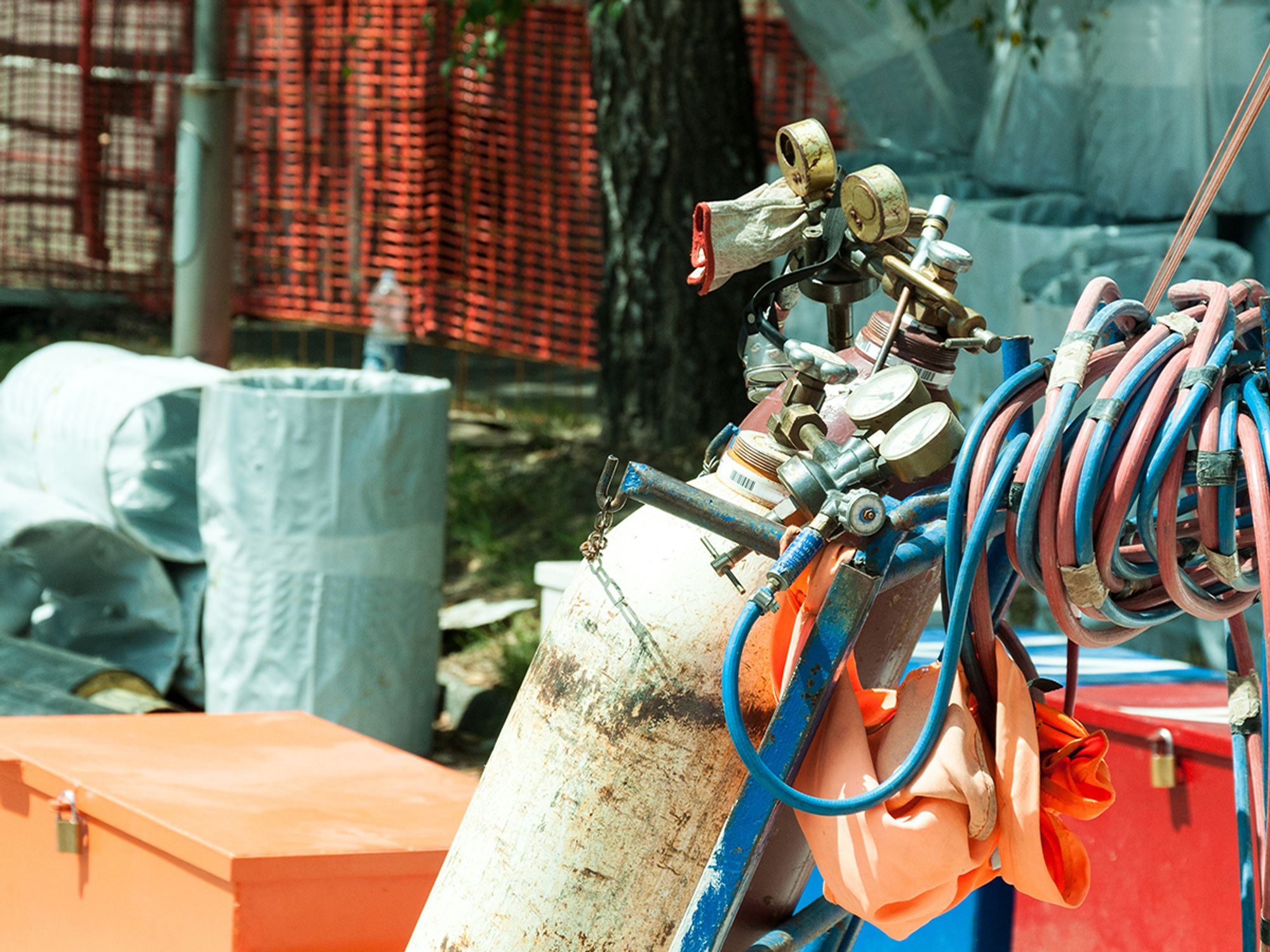Equipment

- Welding hoses, manifolds, torches, regulators, gauges, and curtains are all regulated to some extent by OSHA.
Welding involves many types of equipment, some of which the Occupational Safety & Health Administration (OSHA) regulates specifically and some it does not. Some examples are discussed below.
Welding hoses
Employers should check with the manufacturer of hoses and gauges to see what restrictions or cautions are noted, or to see how lines should be purged after turning off the gases.
Fuel gas and oxygen hoses must be easily distinguishable from each other, either with color contrast or surface characteristics that are noticeable to the touch.
All hoses carrying acetylene, oxygen, natural/manufactured gas, or any ignitable or combustible gas or substance must be inspected at the beginning of each work shift. Defective hoses must be removed from service.
No specific regulation addresses storage of welding hoses. If there is a known hazard, OSHA would expect that an employer address it under their General Duty Clause obligations.
Fuel gas and oxygen manifolds
Fuel gas and oxygen manifolds must bear the name of the substance they contain in letters at least 1 inch high. The letters must be either painted on the manifold or a sign permanently attached to it.
Hose connections must be kept free of grease and oil and be capped when not in use.
Torches
Torches must be inspected for leaks at the beginning of each work shift, and defective torches removed from service. If torch tip holes become clogged, they should be cleaned with suitable cleaning wires, drills, or other devices designed for this purpose.
Torches should never be lit using matches or from hot work.
Regulators and gauges
Oxygen and fuel gas pressure regulators, including related gauges, must be inspected to verify that they are in good working order.
Curtains/booths
OSHA prefers that welding be shielded from other operations when possible, using weld curtains or booths. At 1910.252(b)(2)(iii), OSHA states, “Where the work permits, the welder should be enclosed in an individual booth painted with a finish of low reflectivity such as zinc oxide (an important factor for absorbing ultraviolet radiations) and lamp black, or shall be enclosed with non-combustible screens similarly painted.” Passersby should be separated from welding using these curtains, booths, or screens, or else should wear suitable eye protection.
